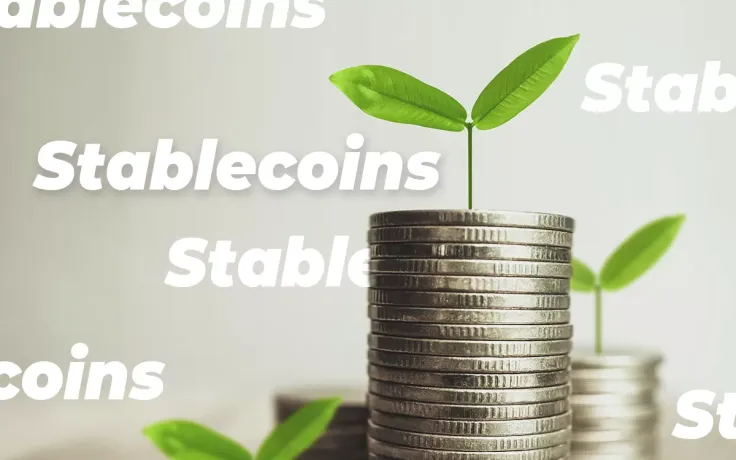
Technology, sometimes, takes a long-winded, tortuous path. As we have often experienced in life, the graph of success is never a straight line. It’s filled with contours, slopes, steep valleys, and few peaks. When you think of cryptocurrencies and how far Bitcoin has come, you might be tempted to smile and count it as a remarkable success. But let’s take a closer look.
Traditional cryptocurrencies are extremely volatile. Let’s consider Bitcoin – at the beginning of 2017, it was barely $1,000, but before December of the same year, it peaked at $20,000. Cool, right? But as of June 2018, the Bitcoin price is hovering around $7,000.
Ethereum, Litecoin and other altcoins have demonstrated a similar behavior so we know that it’s not peculiar to Bitcoin alone. In fact, traditional fiat currencies also suffer from inflation and hyperinflation. Check out the case of Venezuela, Nigeria, Zimbabwe, and even some European countries. It seems as though the concept of a stable currency is an illusion. Is there a solution?
What are stablecoins?
The extremely volatile nature of cryptocurrencies makes them attractive for long-term investors, highly skilled short-term day traders and news analysts. However, this same characteristic makes them less than ideal for mainstream purposes.
What if we had a kind of cryptocurrency which could afford us the level of stability that we have with our fiat currency? Well, we do. We have stablecoins.
Stablecoins, basically, are cryptocurrencies which are stable in the purchasing power they possess. Even if they exhibit traits of inflation, this is in a bid to encourage the holders of this currency to spend rather than hold the currency. In other words, stablecoins are cryptocurrencies which have a fixed price, usually measured against another fiat currency.
What are the properties of a stablecoin?
Now that you have an answer to the question, “what are stablecoins?” we can go on to explore what makes a stablecoin ideal. In essence, if a crypto can achieve the properties discussed below, it is an ideal stablecoin.
-
Can the coin be used as a medium of exchange to trade goods and services?
-
Can it be used to maintain wealth over a period of time without depreciating in value?
-
Is it an appropriate measurement unit which can be used to define and compare different values?
-
Is it scalable? Can it be used by 7 billion people?
If any cryptocurrency meets all four conditions, then we can agree that it is, indeed, one of the best stablecoins we have.
Why are stablecoins important?
All about stablecoins crypto involves stability and making cryptocurrencies parallel fiat currencies better. This is in a bid to diversify and have cryptocurrencies enjoy wider use, especially in practical applications. We can safely say that stablecoins would attract more than investors or short-term traders. The success of stablecoins will cause an average person to consider crypto for day-to-day trading activities. What more do we stand to gain? Here are some of the benefits of stablecoins.
1. Stablecoins hedge against volatility
Remember the time when Bitcoin was selling for $20,000? If you had 2 BTC and then decided to trade the BTC for a stablecoin which was measured in USD, the transaction would give you 40,000 units of stablecoins. Now that the price is around $7,500, rather than having $15,000, you would still have $40,000 worth of stablecoins. This is pretty impressive, right?
2. Stablecoins facilitate the global use of a stable currency
In countries like Nigeria and Argentina, the annual inflation rate can be as high as 15 percent yearly. For this reason, it is not unusual to see citizens of these countries seeking USD to preserve the value of their wealth. Think of the stress which will be eliminated if a digital, decentralized and stable currency was made available to the general public.
3. Stablecoins suit the crypto-based lending and derivatives market
A modern financial system with very minimal interference, human error and middle-men is perceived as the ideal concept of finance and cryptocurrencies provide that advantage. However, at the moment, it is impossible for capital markets to rely on cryptocurrency because of the lack of stability.
Providing or collecting crypto-based loans will prove daunting to both the lender and the borrower due to the fluctuations in price. Stablecoins will ensure that there’s a reliable price which one can expect.
Types of stablecoins and how they are created
1. Fiat-collateralized stablecoins
These are quite straightforward and they are relatively easy to create. Using this method, a certain amount of fiat currency is held as collateral and then the coins are provided in a 1:1 ratio. The simplicity and flexibility of this approach make it ideal, but it requires a custodian and close monitoring.
2. Crypto-collateralized stablecoins
Instead of fiat currency, these have another cryptocurrency as collateral. Over-collateralization, the concept of paying more than is required – for example, paying $1,000 worth of BTC to receive $500 in stablecoins – is a common drawback of this approach. In the event that the crypto being held as collateral also loses its value completely, the holder of the stablecoins loses out.
3. Non-collateralized stablecoins
The concept of trading these stablecoins with the expectation that they will retain their value is, perhaps, the best alternative. The seigniorage shares approach which uses an automatically-programmed smart contract to control the supply of the currency has been hailed as the best alternative yet.
Different stablecoins in existence
If you think stablecoins are doomed to fail or that they are only good on paper, think again. We already have existing currencies which attest to the viability of the concept.
Tether
Tether is backed by a fiat currency and the currency is held in a reserve account. It uses the 1:1 concept, making 1 USDT equal to 1 USD. However, it is centralized and this brings an iota of distrust.
MarkerDao
MarkerDao is decentralized and also measured with respect to the US dollar. The Ethereum network is the underlying tech and stability is ensured by a series of smart contracts. The coin, Dai, is also worth 1 USD. However, it can prove complex and slow.
Havven
This system supports itself by providing two coins – Nomins, the stable coin which can be used during day-to-day transactions, and Havvens, the coin in reserve. It is fully decentralized and fast, however, it is relatively new and might not be fully trusted.
 Dan Burgin
Dan Burgin Vladislav Sopov
Vladislav Sopov U.Today Editorial Team
U.Today Editorial Team